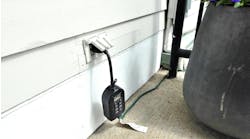The Occupational Safety and Health Act (OSHA) was signed into law 50 years ago this December. Thus began, in most settings, it was somewhat like a game of “catch me if you can.” Many companies would see what they could get by with before someone called OSHA and fines resulted. Employees would see what they could get by with before a supervisor wrote them up.
In Europe, something clicked among regulators, companies, and workers. This game barely made people safer, and something else needed to happen. So things shifted from a violation/punishment approach to a prescriptive “here’s how to be safe” approach. And that made people much safer.
This approach began catching on in the United States, and you can see changes in OSHA regulations accordingly. But when it comes to safety, the electrical industry is leading, rather than reacting to, government policy.
You can see this in (among other places) NFPA 70E. All throughout the document, there is an emphasis on individual behavior. It says, for example, that the electrical safety program “…shall be designed to provide the required self-discipline for all employees who must perform work that may involve electrical hazards” [110.1(D)].
The assumption is that you actually want to work safely — that for you, it’s not a game in which you put your safety glasses on when you see your supervisor coming, but a situation in which you protect your eyes at all times. That for you, it’s not a situation in which you consider safety steps to be in the way of getting work done but a situation in which you consider the safety steps as allowing the work to be done.
You need to see safety as a self-serve process, rather than something a company forces on you. It’s not that you comply with safety rules out of fear of reprisal; it’s that you work safely out of fear of the hazards to you and others.




